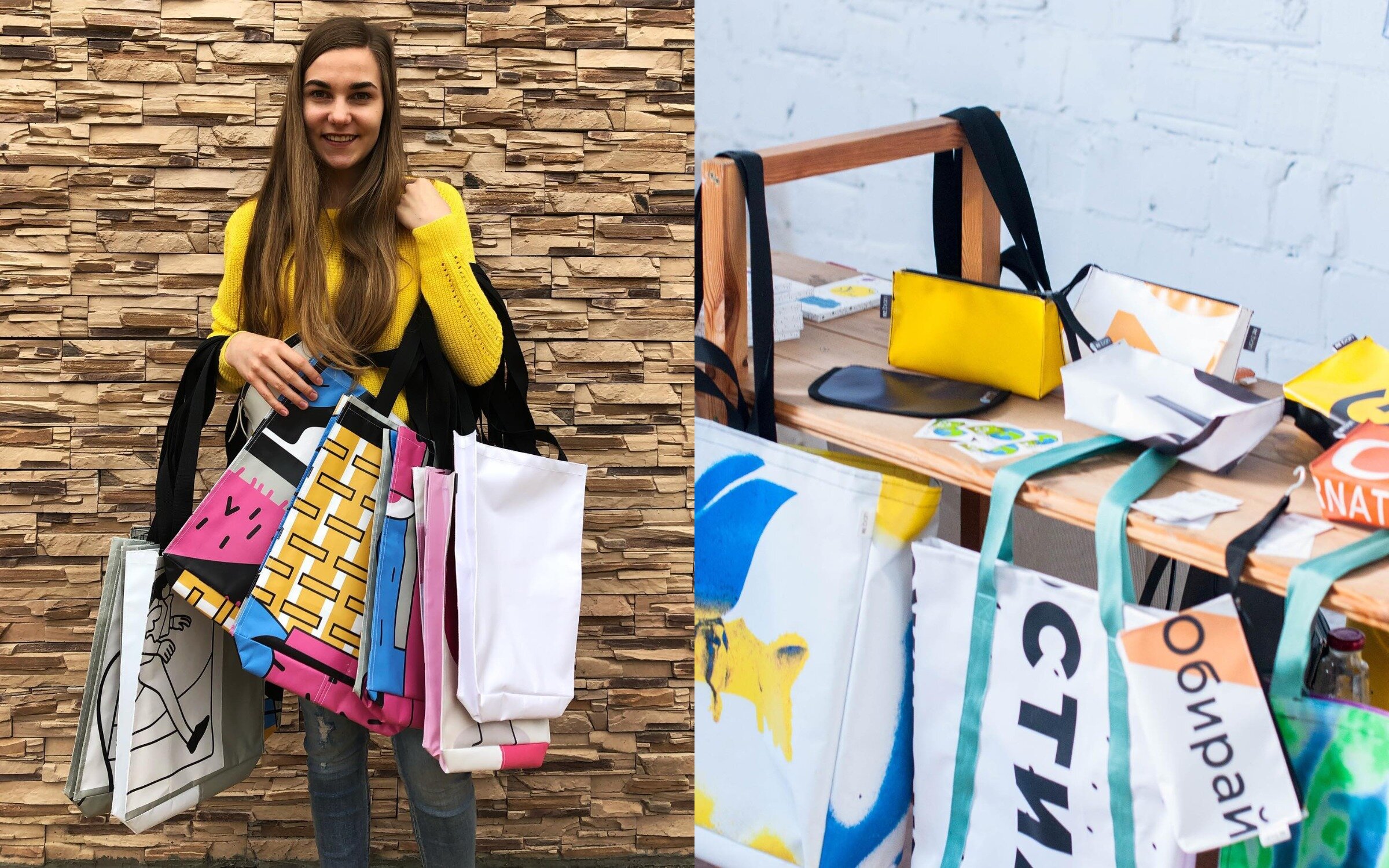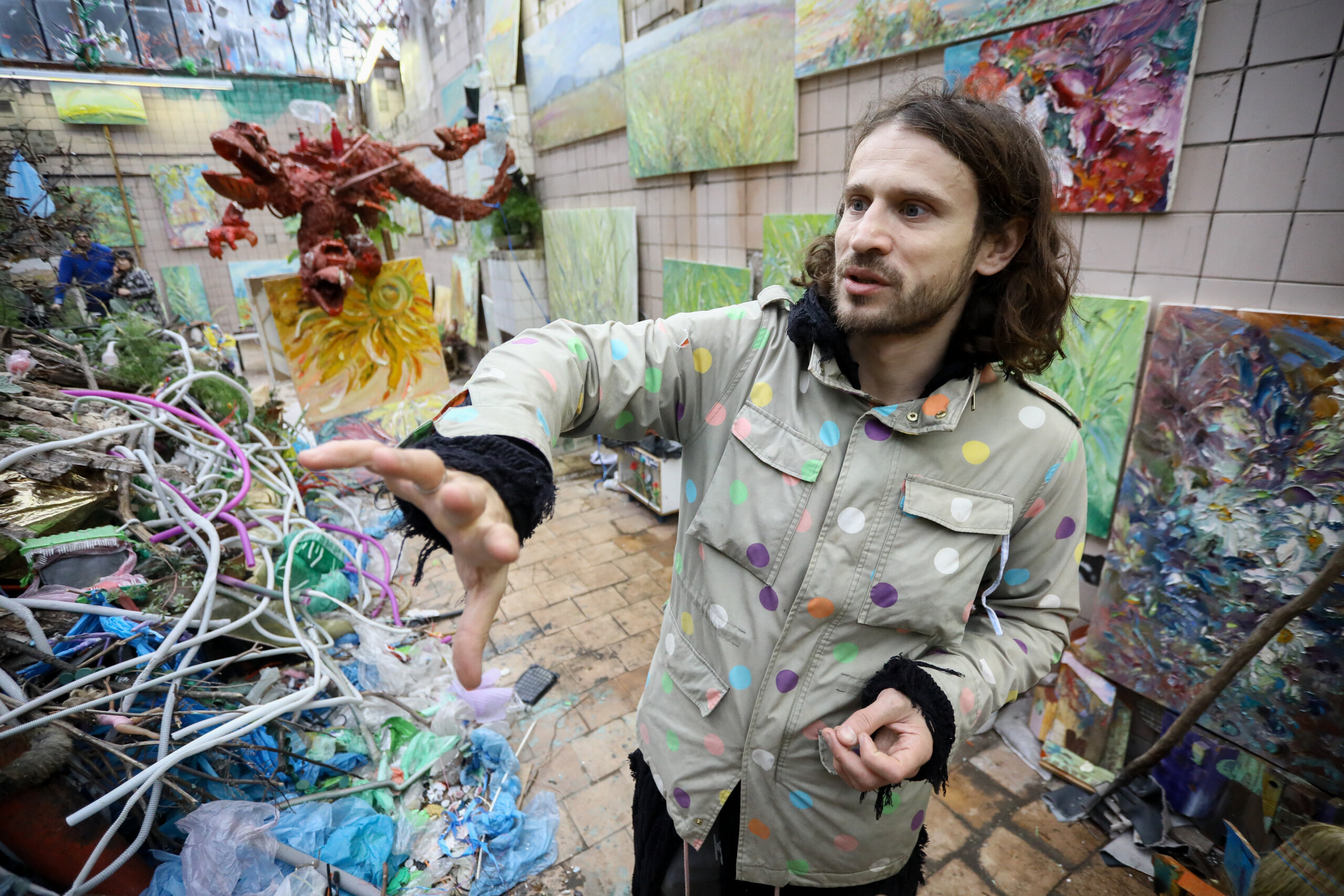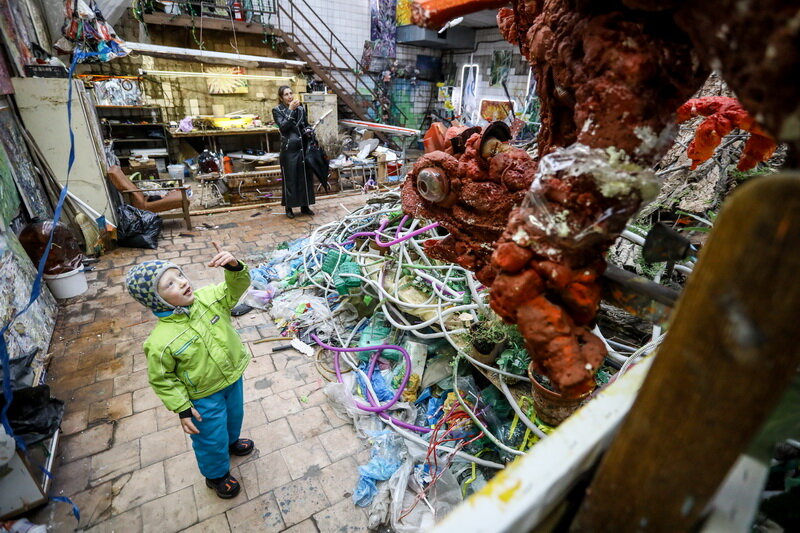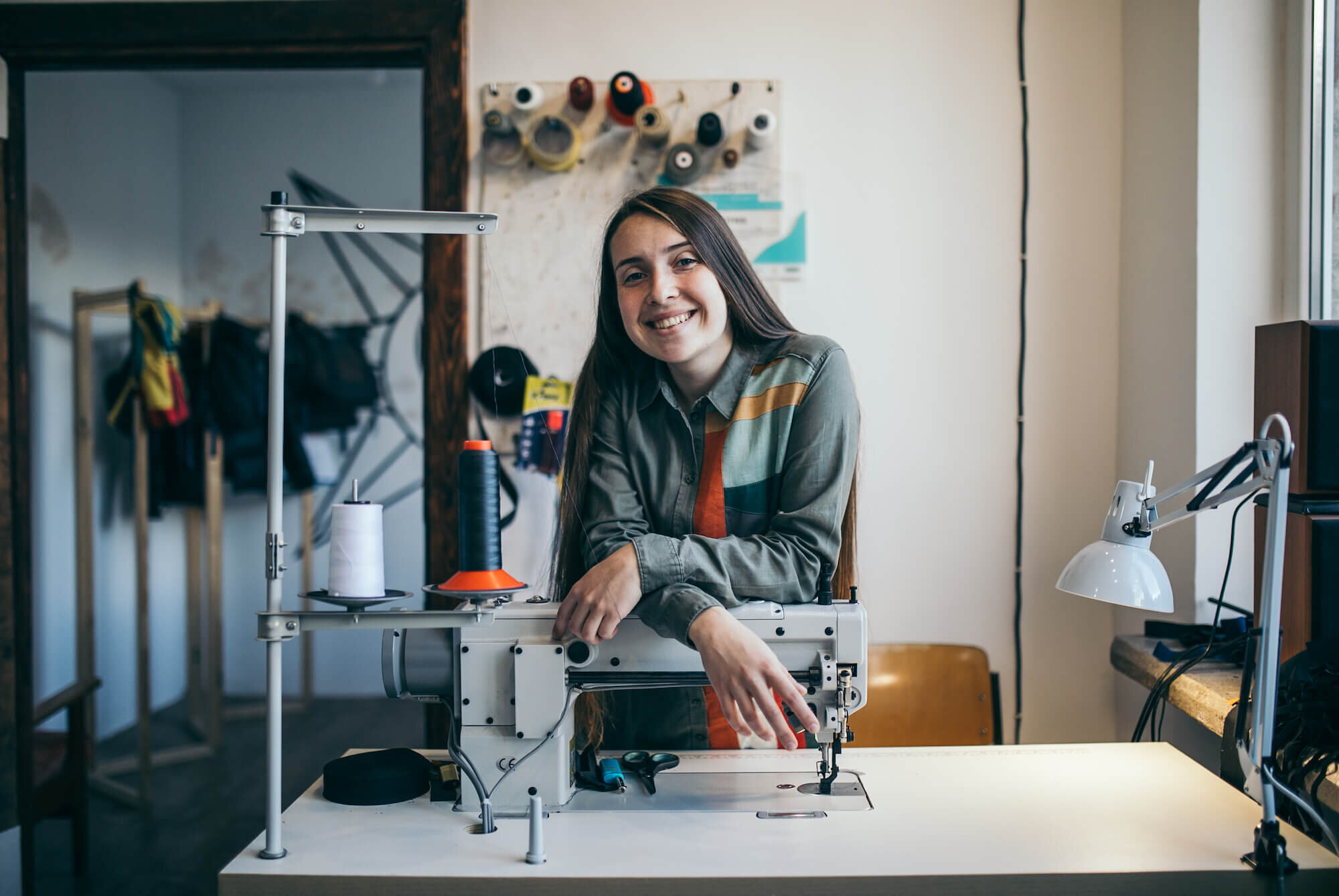Ukraine produces nearly 474 million tons of waste every year and almost all of it ends up in landfills — 9,000 hectares of land covered with garbage that pollutes soil and groundwater. In 2019, Ukraine recycled only 4.1% of trash, while the rest was buried in the ground, said Oleksandr Vozny, the chief executive of Ukraine’s Waste Management Center.
Although Ukraine has enough facilities to utilize waste — nearly 80 local enterprises recycle paper, plastic and glass — the country imports recyclables from abroad to fill these factories because Ukrainians do not sort the garbage properly, according to environmental expert Kseniia Renchkovskaya.
To reduce the devastating impact of waste on the environment, local eco-conscious entrepreneurs have taken the lead.
Some of them, like Ukrainian film director Vladimyr Yudashkin, known as Vladi Yudi, are turning garbage into art installations to increase awareness about environmental pollution.
That’s what Yudashkin did in the middle of Kyiv’s Hryshko Botanical Garden: He set up an animation studio in which all decorations are made of garbage. He meant it as a stark warning of where the world may be headed. “I wanted to show that all material objects sooner or later become trash,” Yudashkin told the Kyiv Post.
Others turn waste into new things such as clothes, wallets, jewelry and handbags through the process better known as upcycling.
“Everything deserves a second chance,” said Mariya Eimanavicius, the founder of Ukrainian brand Upcycling Freaks that turns old plastic toys into creative pieces of jewelry.
Adding value
Compared to recycling, an industrial process when garbage is broken down into particles to create new raw materials, upcycling is more about improving the discarded item and adding value to it.
Eimanavicius, for example, uses parts of old toys, like Barbie shoes, LEGO bricks or Kinder Surprise figures, to make necklaces, rings and earrings. Because the jewelry looked so bizarre, Eimanavicius didn’t think people would wear it, but the demand appears to be high. As of today, she delivers jewelry worldwide — to Canada, the U.S., the U.K., Latvia, Spain, Germany and Russia.
There are many places where Eimanavicius finds discarded trinkets: children’s toy boxes, flea markets, online marketplaces like Olx, Etsy and eBay. Although old toys are cheap, her jewelry is relatively expensive. For example, a LEGO bricks ring costs nearly $13, while earrings with Barbie shoes are sold for nearly $8.
“I’m trying to bring the idea of upcycling to the wider public”, she said. “This is not about toy jewelry but about the concept overall.”
Sustainable fashion
Some materials cannot be recycled and are usually dumped into landfills or burned. Outdoor banners and the ubiquitous signs of modern cities, are some of the examples. These banners contain vinyl, one of the most widely-used types of plastic but also one of the most damaging to the environment.
Although vinyl is not recyclable, it can be upcycled. This idea is at the core of Ukrainian company Re:ban that turns used banners into stylish purses, backpacks, pencil cases, and make-up bags.
Daryna Antonenko founded Re:ban to give banners a second life. Many Ukrainian companies use banners for promotion during events and need a sustainable way to dispose of them. With Antonenko’s help, they turn banners into items. A handbag made of banners, for example, costs $12.
Because the cost of the products is so low, the company wants to expand abroad where it can compete with expensive foreign handmade products.
According to Antonenko, Re:ban is a social business: It employs retired people, refugees and people with disabilities. It also holds lectures about ecology and upcycling because this is a new trend that hasn’t yet reached wide support in Ukraine, Antonenko said.

Ukrainian entrepreneur Daryna Antonenko founded fashion company Re:ban to give promotion banners a second life. She turns them into stylish purses, backpacks, pencil cases, and make-up bags. It is an ecological way to dispose of banners that contain vinyl, one of the most widely-used types of plastic.
Another Ukrainian business, Potrib, has found an alternative to mass-produced — thus non-ecological — backpacks and makes them from fabric remnants, which it takes from Ukrainian clothing and furniture companies.
The company wants to reduce textile waste, according to its founder Ilona Shevchuk. Globally, the textile industry produces an estimated 92 million tons of garbage a year, which is worth nearly $500 billion. It also consumes vast amounts of water, reducing the resource for poor countries and thus contributing to disease and agricultural scarcity and starvation.
Lviv-based Potrib uses textile leftovers to create colorful backpacks that are as convenient and fancy as their less ethical alternatives. One such backpack costs nearly $48, but the price depends on competition on the market, Shevchuk told the Kyiv Post.
The fashion industry generates 10% of global greenhouse gas emissions, and this number is expected to grow as the average person buys 60% more items of clothing every year, according to the United Nations Economic Commission for Europe.
The so-called fast-fashion, when companies produce more but at a smaller price, harms the environment. Today the production of clothes emits more greenhouse gas emissions than international shipping and aviation combined. Colorful prints and fabric release toxic chemicals that pollute clean water more than agriculture does.
Some Ukrainian brands try to reduce the impact. Ukrainian designer Yasia Khomenko, for example, creates colorful clothes from curtains, upholstery and vintage garments.
According to Khomenko, her brand, Rcr Khomenko, was inspired by second-hand clothes and children’s fairy tales. Khomenko redesigns plaid blankets into sweatshirts and creates upcycled shirts with exclusive folk prints.
Another Ukrainian brand, Tokonikomu, uses old denim fabric produced by popular brands, like Levi’s, Wrangler and Lee, and turns it into new jeans, jackets and skirts.
Eco-friendly businesses like this seem to have their momentum. They drive changes, discover new technologies and can later be used to produce clothes on the industrial scale, said Renchkovskaya.
For now, Ukraine’s legislature has norms regarding the management of the waste, but there are no laws on how to recycle or upcycle it, which puts the task of resolving the issue on the shoulders of local entrepreneurs and activists. In order to really ramp up upcycling and reduce the amount of recyclable waste ending up in landfills, Renchkovskaya believes Ukraine needs a combined effort that can be achieved by fostering cooperation among the government, community and business.




